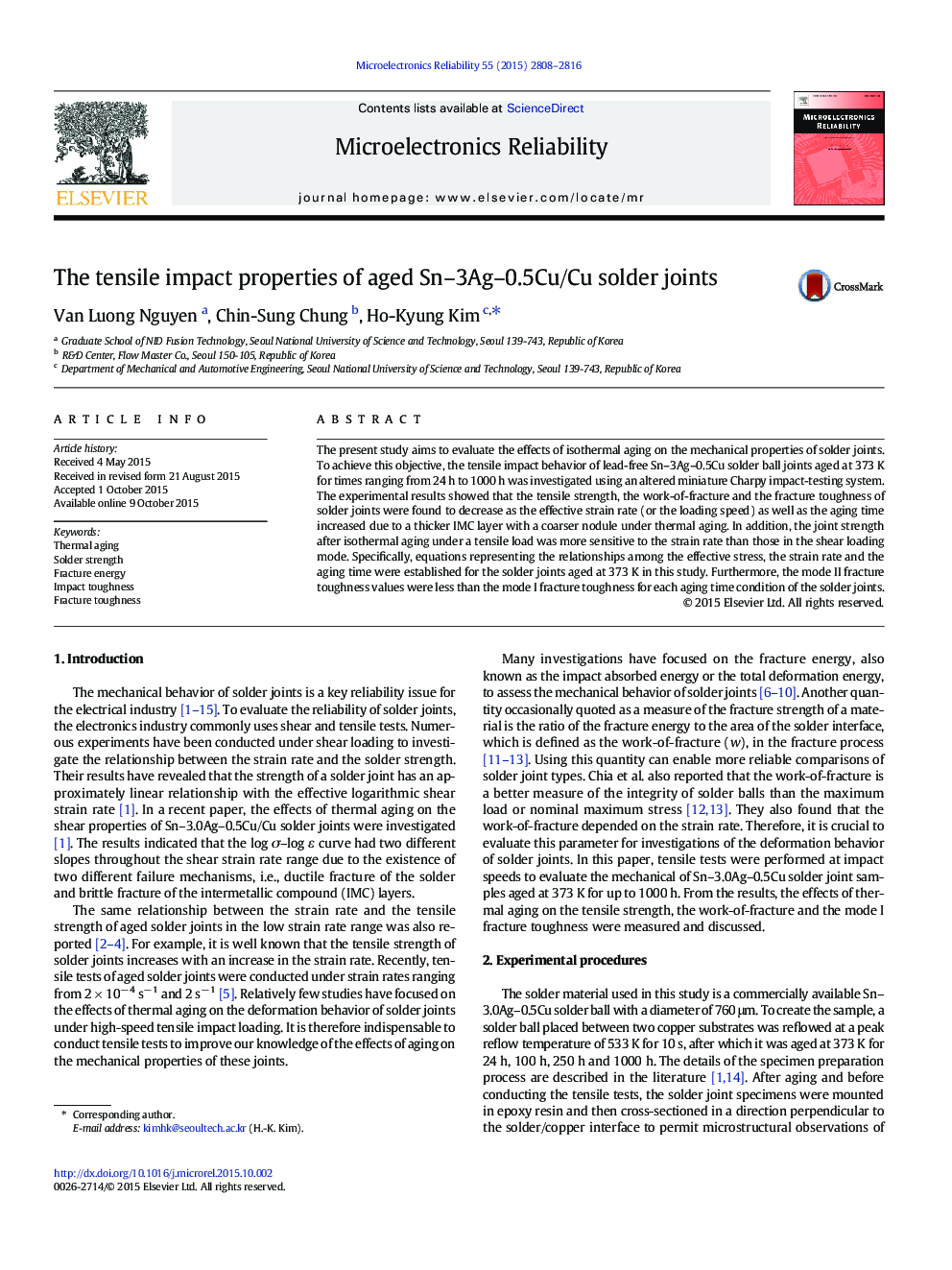| Article ID | Journal | Published Year | Pages | File Type |
|---|---|---|---|---|
| 544708 | Microelectronics Reliability | 2015 | 9 Pages |
•The effects of isothermal aging at 373 K on mechanical properties of solder joints are evaluated.•Tensile strength, the work-of-fracture and the fracture toughness of solder joints are determined.•Tensile and shear strength values of aged solder joints are compared.•The relationships among the effective stress, the strain rate and the aging time are estimated.
The present study aims to evaluate the effects of isothermal aging on the mechanical properties of solder joints. To achieve this objective, the tensile impact behavior of lead-free Sn–3Ag–0.5Cu solder ball joints aged at 373 K for times ranging from 24 h to 1000 h was investigated using an altered miniature Charpy impact-testing system. The experimental results showed that the tensile strength, the work-of-fracture and the fracture toughness of solder joints were found to decrease as the effective strain rate (or the loading speed) as well as the aging time increased due to a thicker IMC layer with a coarser nodule under thermal aging. In addition, the joint strength after isothermal aging under a tensile load was more sensitive to the strain rate than those in the shear loading mode. Specifically, equations representing the relationships among the effective stress, the strain rate and the aging time were established for the solder joints aged at 373 K in this study. Furthermore, the mode II fracture toughness values were less than the mode I fracture toughness for each aging time condition of the solder joints.
